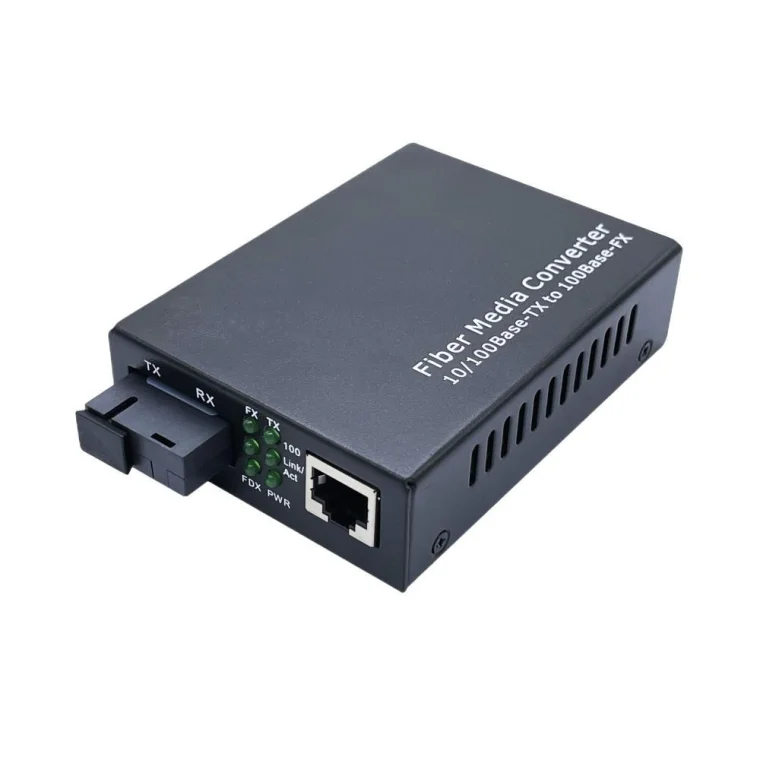In the world of fiber optics, choosing the right transceiver is crucial for ensuring reliable and high-performance communication over long distances. Two common types of fiber optic transceivers are single-mode and multi-mode, and while both serve similar purposes, they are designed for different applications and environments. Understanding the key differences between these two types of transceivers can help you make an informed decision based on your network needs.
In this blog post, we will explore the differences between single-mode and multi-mode fiber optic transceivers, the advantages of each, and how they impact fiber optic communication. We will also highlight how FlyingFiber Co., Ltd., a leading provider of fiber optic solutions, can help you find the best products for your communication needs.

What Are Fiber Optic Transceivers?
A fiber optic transceiver is a device that sends and receives data through optical fiber cables. These transceivers convert electrical signals into optical signals for transmission over the fiber optic cables and then convert the optical signals back into electrical signals at the receiving end. They are used in a variety of applications, including telecommunications, data centers, and enterprise networks, to provide high-speed, long-distance data transmission.
Transceivers come in two main types: single-mode and multi-mode, each with distinct characteristics suited to specific types of fiber optic communication.
What Is Single-Mode Fiber Optic Transceiver?
Single-mode fiber optic transceivers are designed to work with single-mode fiber (SMF), which has a small core (typically around 8 to 10 microns in diameter). This small core allows only one mode of light to travel through the fiber, making it ideal for long-distance communication. Single-mode fibers are capable of transmitting data over much greater distances (up to 100 km or more) compared to multi-mode fibers.
Key Features of Single-Mode Fiber Optic Transceivers:
-
Longer Transmission Distance: Single-mode transceivers are ideal for long-distance applications, often used in metropolitan area networks (MANs) or wide area networks (WANs).
-
Higher Bandwidth: Due to the smaller core and the way light is transmitted, single-mode fiber supports higher data transfer rates and bandwidth, making it suitable for high-speed communication over long distances.
-
Cost: Single-mode transceivers and fiber cables can be more expensive compared to multi-mode options due to the more precise manufacturing required for single-mode fibers.
-
Laser Light Source: Single-mode fiber uses a laser light source, which allows for more precise and focused transmission of light.
Applications of Single-Mode Fiber Optic Transceivers:
-
Long-distance telecommunications
-
Internet backbone networks
-
Fiber-to-the-home (FTTH) connections
-
Campus or data center connections with long-distance requirements
What Is Multi-Mode Fiber Optic Transceiver?
Multi-mode fiber optic transceivers are designed for multi-mode fiber (MMF), which has a larger core (50 to 100 microns in diameter). The larger core allows multiple light modes to travel simultaneously, making multi-mode fiber ideal for short-distance applications. Multi-mode fiber is often used for communication over shorter distances (up to 2 km or so), typically within a building, campus, or data center environment.
Key Features of Multi-Mode Fiber Optic Transceivers:
-
Shorter Transmission Distance: Multi-mode transceivers are designed for shorter-distance applications, typically used within buildings, data centers, or local area networks (LANs).
-
Lower Bandwidth and Speed: While multi-mode fiber can support high data transfer rates, its bandwidth and speed are typically lower than those of single-mode fiber, particularly over long distances.
-
Cost-Effective: Multi-mode fiber and transceivers are typically more affordable than single-mode options, making them a cost-effective choice for short-range applications.
-
LED Light Source: Multi-mode fiber uses an LED light source, which is less expensive than the laser used in single-mode systems but is more diffused, resulting in lower performance over long distances.
Applications of Multi-Mode Fiber Optic Transceivers:
-
Short-distance communication within a data center
-
Local area networks (LANs)
-
Audio/visual systems
-
Campus networks and intra-building communication
Key Differences Between Single-Mode and Multi-Mode Fiber Optic Transceivers
| Feature | Single-Mode Fiber Optic Transceiver | Multi-Mode Fiber Optic Transceiver |
|---|---|---|
| Fiber Core Size | Small core (8-10 microns) | Larger core (50-100 microns) |
| Transmission Distance | Long distance (up to 100 km or more) | Short distance (up to 2 km) |
| Bandwidth | High bandwidth, ideal for high-speed data | Lower bandwidth, suitable for shorter ranges |
| Light Source | Laser | LED |
| Cost | More expensive | More affordable |
| Applications | Long-distance communications, backbone networks | Short-range networks, data centers, LANs |
Why Choose FlyingFiber Co., Ltd. for Your Fiber Optic Transceivers?
FlyingFiber Co., Ltd. is a leading provider of fiber optic communication solutions, with over a decade of experience in the industry and a wide global customer base. FlyingFiber specializes in producing a range of high-quality fiber optic products, including both single-mode and multi-mode fiber optic transceivers.
The company’s focus on quality and performance ensures that customers receive reliable, long-lasting products suited to their specific needs. Whether you’re setting up a high-performance long-distance network or a cost-effective local area network, FlyingFiber provides the expertise and the products to ensure the success of your communication systems.
Conclusion
Choosing between single-mode and multi-mode fiber optic transceivers ultimately depends on your specific application and distance requirements. Single-mode fiber optic transceivers are the best choice for long-distance, high-bandwidth applications, while multi-mode fiber optic transceivers are ideal for short-range communication and cost-sensitive installations.
By partnering with FlyingFiber Co., Ltd., you gain access to high-quality fiber optic solutions that can meet your needs, whether you're building a large-scale telecommunications network or setting up a local data center. With their vast experience in the industry and commitment to delivering top-tier fiber optic products, FlyingFiber ensures that you get the best solution for your fiber optic communication requirements.
Feel free to reach out to FlyingFiber Co., Ltd. for more information about their products and how they can help you optimize your fiber optic network.
www.flyingfiber.com
Shenzhen FlyingFiber Co., Ltd.
